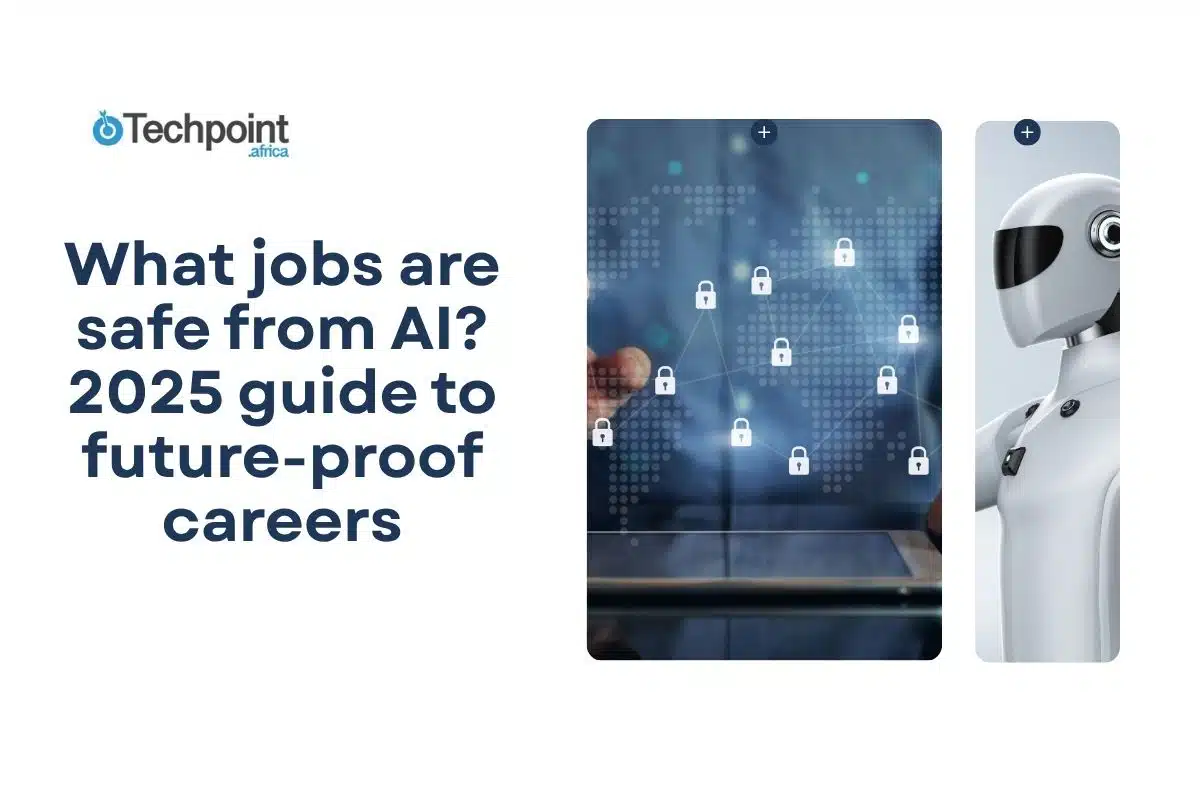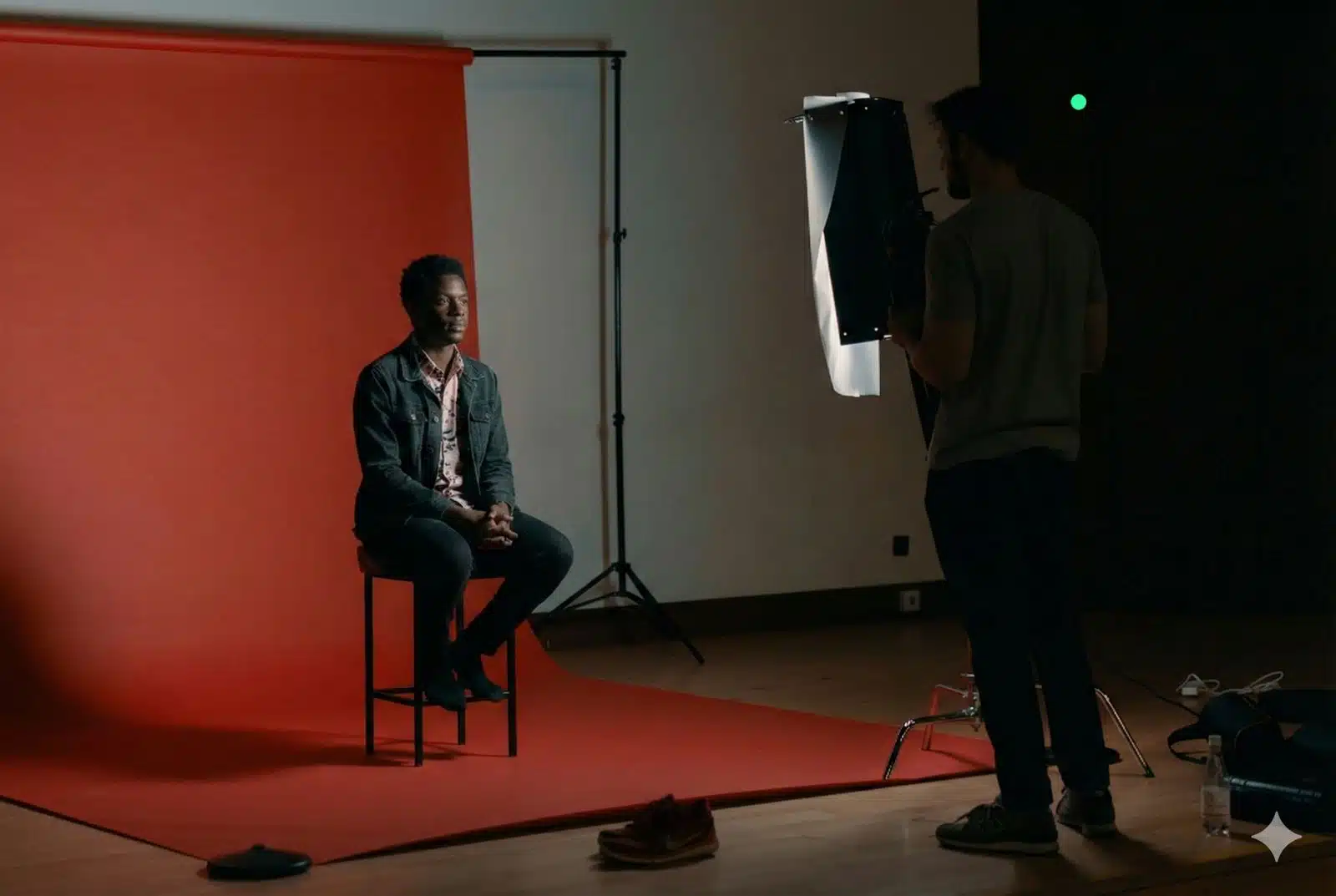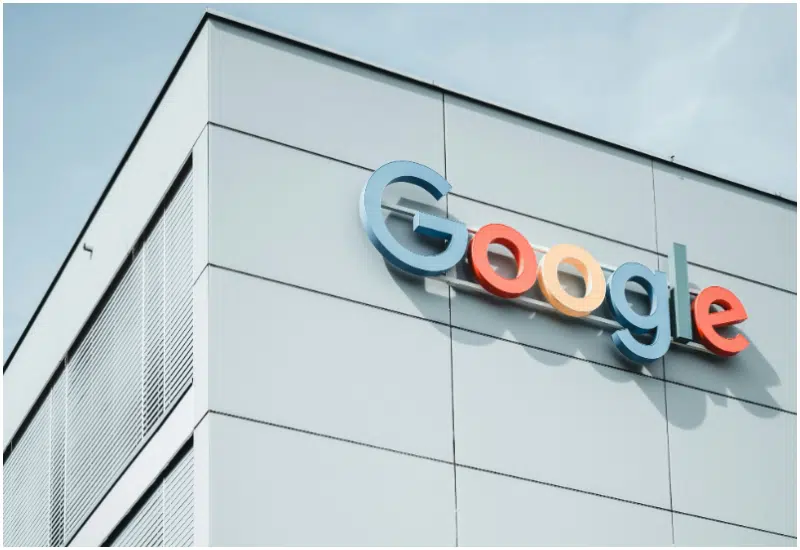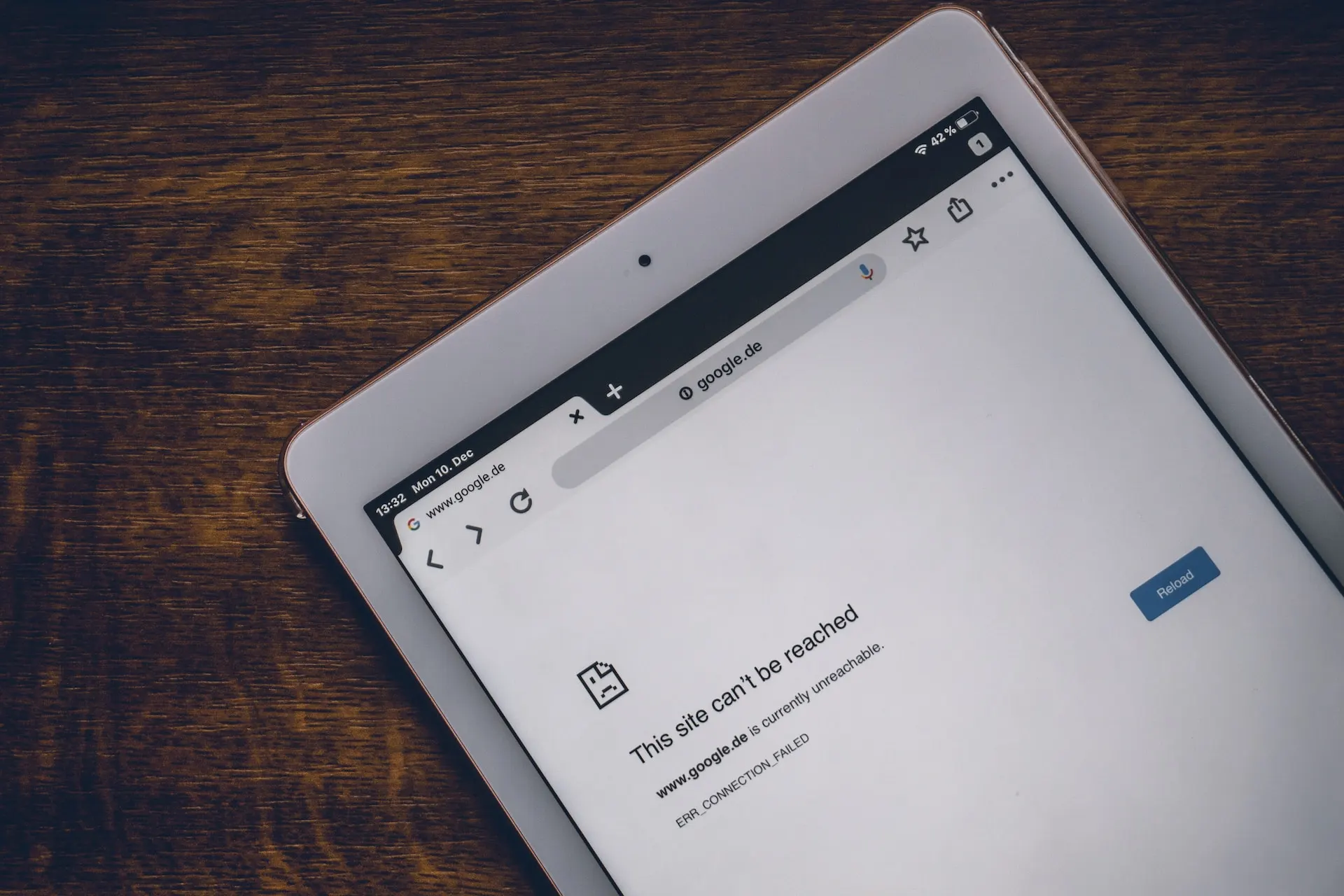
Imagine waking up one morning to find out your job description has quietly changed overnight. The tasks you spent years mastering? A machine is now handling them faster, cheaper, maybe even better. No memo. No warning. Just a quiet shift you can’t ignore.
That’s what AI feels like for many people today. Not a robot snatching jobs in one swoop, but a slow, steady creep into the work we thought only humans could do. Writers see AI tools drafting articles in seconds. Artists watch software generate complex designs at the click of a button. Even lawyers and doctors are seeing AI handle parts of their work.
Hence, the questions: Is AI truly taking jobs? Or is it simply forcing us to rethink what work means in this new age? In this article, we’ll break it down. You’ll see where AI has made its mark already, which jobs are safer for now, and which ones are most vulnerable as technology advances. More importantly, you’ll see what it takes to stay ahead of the curve.
Can AI actually take your job?
AI is already changing the job market, but it doesn’t work the way people sometimes imagine. It doesn’t “take” jobs by walking in and replacing a person from start to finish. What it does is take over tasks that make up parts of a job. And when enough tasks are automated, the need for that job can shrink or in some cases, disappear.
In many industries, AI tools have taken on work that humans used to do. For example:
- Customer service: Many businesses now use AI chatbots to answer basic questions, book appointments, or help customers track orders.
- Transcription: Software can now turn speech into text in minutes, which means fewer people are hired to transcribe interviews, meetings, or podcasts.
- Basic data entry: AI systems handle forms, invoices, and reports without the errors or fatigue that come with repetitive human work.
- Graphic design (at the simple end): Tools can now generate logos, banners, and social media posts at lightning speed.
These examples show how AI chips away at jobs by handling tasks that are predictable and repetitive.
What AI can (and can’t) do
AI is good at:
- Following patterns
- Processing large amounts of data
- Performing tasks that follow clear rules
- Working at high speed without getting tired or distracted
AI struggles with:
- Judgment calls: Making decisions when the answer isn’t obvious
- Original ideas: Coming up with creative solutions or fresh concepts
- Human connection: Showing empathy, building trust, understanding emotion
- Common sense: Reading between the lines or understanding context the way people do
So, can AI take your job?
It depends on how your job is built. If your work is mostly made up of tasks that can be turned into a checklist, AI could take over a large part of it. Also,If your job requires thinking on your feet, dealing with people, creating new ideas, or solving complex problems, AI isn’t ready to replace you.
In most cases, AI will change jobs more than it replaces them completely. It will take on the routine parts and leave the human parts for you to handle. So, the problem isn’t that AI is coming for jobs. It’s that jobs are being reshaped. The question becomes: how ready are we to focus on the parts of work that AI can’t easily do?
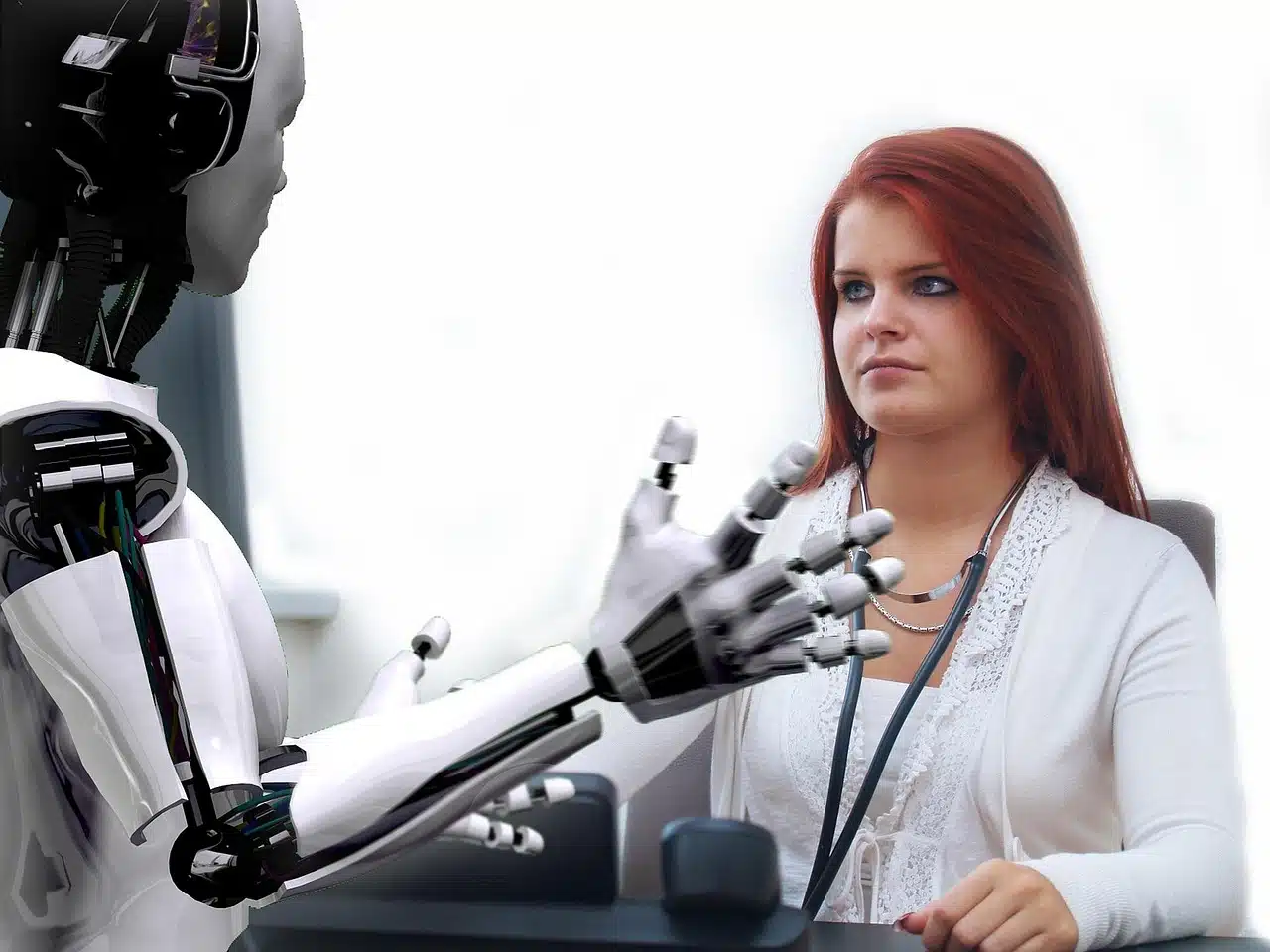
What jobs are safe from AI?
Some jobs stand on stronger ground as AI continues to reshape the workplace. These are roles where the core work depends on human qualities that machines can’t easily copy. Let’s look at the key categories and the types of jobs that are safer, at least for now.
Jobs that depend on human connection
AI can simulate conversation, but it doesn’t truly understand emotion. It can’t comfort someone going through a hard time or read subtle social cues the way people do. Jobs that rely on emotional connection, trust, and human presence are much harder to automate.
Examples in this category:
- Therapists and counselors who help people work through personal challenges
- Social workers who assess and respond to complex family and community needs
- Nurses and caregivers who provide not just medical help but also emotional support
- Teachers and educators who guide, motivate, and adapt to different students
These jobs are safe because they go beyond tasks. They involve relationships, sensitivity, and decisions that shift with each situation.
Jobs that require true creativity
AI can remix ideas. It can follow patterns. But it doesn’t have taste, vision, or the ability to create something fresh that speaks to human experience. Jobs that involve creating new concepts, telling stories, or bringing personal style to the table are safer from AI disruption.
Examples include:
- Writers and authors who create original narratives
- Artists and performers whose work reflects personal expression
- Brand strategists and creative directors who build unique identities and campaigns
- Film directors and producers who shape storytelling in ways AI can’t plan
AI can assist with drafts or suggestions, but these roles depend on ideas that break the mold, which is something machines struggle with.
Skilled trades and practical problem-solving
Machines can follow instructions, but they struggle in unpredictable, hands-on environments. Many skilled trades involve diagnosing problems that aren’t obvious, adapting to messy real-world conditions, and using tools with precision.
Jobs that fall into this safer zone:
- Electricians working with complex or outdated wiring
- Plumbers troubleshooting leaks or blockages where no two cases are the same
- Auto mechanics figuring out faults that don’t match any standard guide
- Carpenters and builders handling unique structures and on-site challenges
AI can’t easily match the flexibility or practical thinking needed for this kind of work.
Roles that involve big-picture thinking and judgment
AI can process data and offer options. But it doesn’t weigh values, ethics, or human impact the way a person does. Work that requires strategic decisions, balancing risks, and leading others remains safer from automation.
Examples:
- CEOs and senior managers shaping company direction
- Policy makers and advisors creating laws and strategies that affect lives
- Consultants offering tailored advice based on complex client needs
These roles are safe because they deal with nuance, long-term consequences, and decisions that go beyond numbers.
Jobs that protect against threats and manage risk
AI plays a growing role in spotting unusual patterns, flagging possible attacks, and automating certain defenses. But cybersecurity isn’t just about reacting to what’s obvious. It’s about anticipating new types of attacks, making judgment calls in high-stakes situations, and thinking like a human adversary — things AI still can’t do well on its own.
What keeps these jobs safer is the need for:
- Creative problem-solving to counter evolving threats
- Ethical decision-making in sensitive situations
- The ability to adapt quickly when attackers change tactics
Examples:
- Cybersecurity analysts and engineers designing, testing, and updating defense systems
- Ethical hackers (penetration testers) who think like attackers to find vulnerabilities
- Risk managers assessing potential security issues and setting policies to reduce them
AI can be a valuable tool in this space, scanning for known risks, analyzing data faster, and helping automate routine security checks. But it can’t replace the human ability to outthink attackers or handle complex, unpredictable incidents.

Will these jobs stay safe forever?
The honest answer is that no job is guaranteed to stay safe forever. The roles we just explored are harder for AI to take over right now because they depend on human strengths that machines can’t match. They involve empathy, creativity, adaptability, and judgment. But technology keeps improving, and what feels safe today could face new pressures tomorrow.
AI is learning faster than many people expect. For example:
- AI tools are getting better at generating creative content. What started as basic image generation has already grown into AI systems that can produce art, write music, and even draft short stories.
- Emotional AI is being developed to detect tone, facial expressions, and sentiment. While far from perfect, these tools are slowly improving in their ability to mimic parts of human interaction.
- Robotics and machine learning are advancing together. Machines that can learn from experience and adjust their actions will pose a bigger challenge to jobs that rely on hands-on problem-solving.
What this means is simple. Even jobs that feel safe now will change. The safest jobs won’t be the ones that avoid AI completely. They’ll be the ones where people use AI as a tool to make smarter decisions, offer better services, or free up time for the parts of the work that only humans can do.
Staying safe means staying adaptable. The future will reward people who:
- Learn new skills as technology evolves
- Focus on what AI struggles with like complex thinking, personal connection, originality
- Get comfortable using AI as a partner rather than seeing it as a rival
AI isn’t standing still, and neither should we.
Future-proof skills: what to focus on no matter the job
If there’s one thing the rise of AI has made clear, it’s that job titles aren’t what protect you, skills do. The more your abilities focus on what AI struggles with, the more valuable you stay as the workplace evolves.
Here’s what to build, strengthen, and lean into:
- Emotional intelligence
AI can detect words and even tone, but it can’t truly feel. People who can read situations, respond with empathy, and build trust will always have an edge. This applies in leadership, customer relations, healthcare, teaching, and beyond.
- Critical thinking
AI can give you options, but it can’t judge which path is right in a complex situation. The ability to look at a problem, weigh risks, spot hidden issues, and make thoughtful decisions is something machines can’t easily copy.
- Creativity
AI can follow patterns. People break them. Whether it’s creating art, solving problems in new ways, or building fresh ideas from scratch, human creativity keeps jobs relevant in fields from marketing to design to strategy.
- Adaptability
The people who thrive won’t be those who resist change, but those who adjust to it. Learning to work alongside AI, picking up new tools, and being open to new ways of working are key survival skills in a world where technology keeps shifting.
- Communication
AI can generate text or speech, but it doesn’t truly connect. Clear, persuasive, human communication, whether in writing, speaking, or leading will remain essential in almost every job.
- Tech literacy
Finally, knowing how to use AI and other digital tools gives you power. The future belongs to people who don’t just fear AI, but figure out how to make it work for them.
No matter what your job is today, investing in these skills will help you stay valuable tomorrow. AI might reshape tasks, but these strengths keep you in demand.
How AI can be a partner, not a threat
It’s easy to see AI as competition. After all, it’s changing how work gets done and even taking over certain tasks. But the reality is that AI doesn’t have to be the enemy. In many cases, it can become a powerful partner, one that helps you do your job better, not replace you.
In industries across the board, AI is already working alongside people in ways that make their work faster, safer, or smarter:
- In Medicine: AI systems help doctors spot patterns in scans that are hard for the human eye to catch. The doctor still makes the final call, but the technology supports faster and often more accurate diagnosis.
- In Teaching: AI-powered tools can help identify students who need extra help or adjust lessons to different learning speeds. But it’s still the teacher who builds the connection, motivates the class, and responds in real time.
- In Business: AI can process massive amounts of data to highlight trends or risks. Managers and analysts can then use that information to make stronger decisions not to mention save hours they’d have spent on manual reports.
- In Creative work: Writers, designers, and marketers are already using AI to brainstorm ideas, draft outlines, or generate concepts they can then refine and make their own.
When people learn to work with AI, using it to handle routine tasks, surface insights, or speed up basic processes, they often free up time for higher-level work. That means more time for strategy, innovation, and personal connection.
The key is to stop seeing AI as a rival and start seeing it as a tool. Like any tool, it depends on how well you use it.
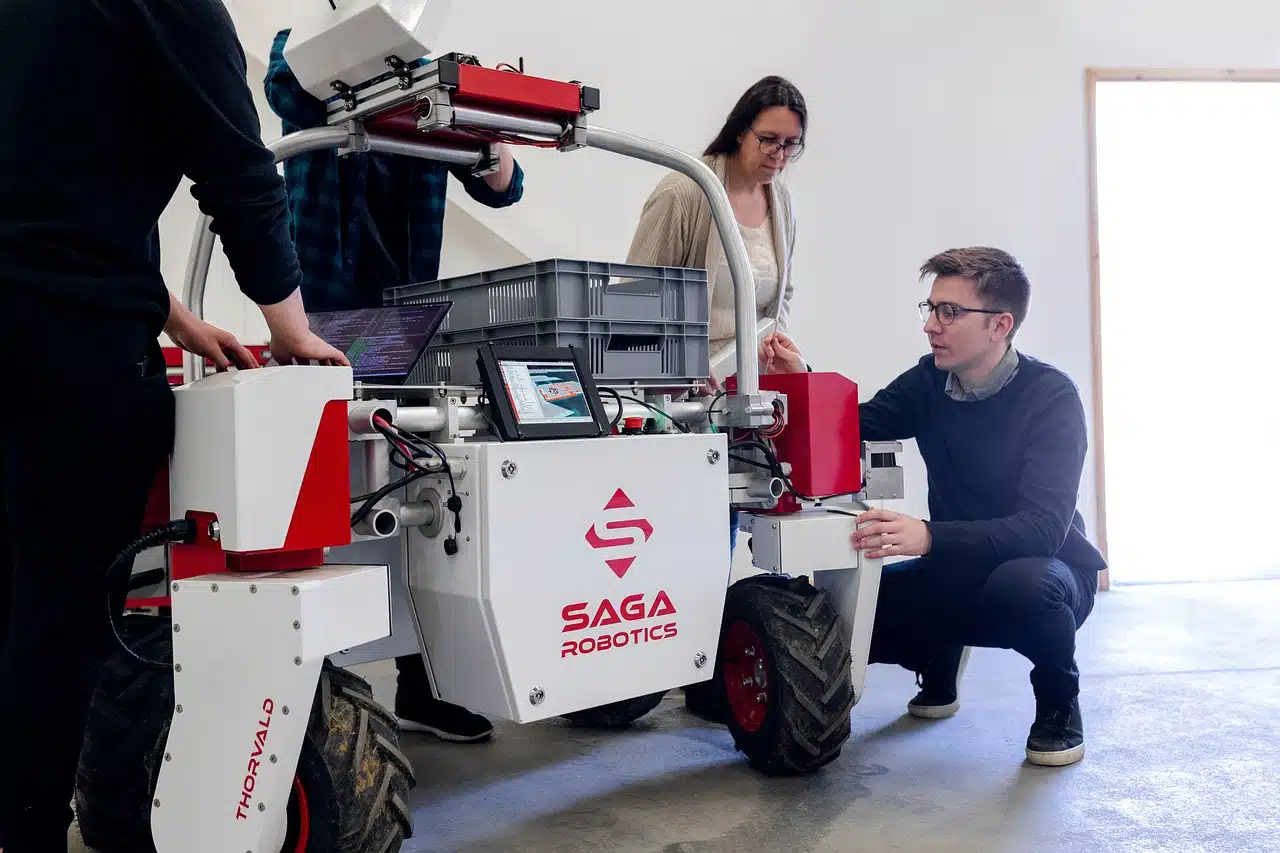
Jobs at high risk: a quick comparison
Some jobs are far more exposed to AI and automation than others. These roles often involve work that’s repetitive, rule-based, or easy to break down into predictable steps. AI and smart machines are already transforming these areas, and the trend is accelerating.
Here’s a clearer look at the kinds of jobs most at risk:
Routine office and administrative tasks
- Data entry clerks: AI handles data processing faster, more accurately, and without fatigue.
- Bookkeepers (basic level): Software can record transactions, reconcile accounts, and generate financial statements.
- Admin assistants (for routine tasks): AI can schedule meetings, send reminders, and draft standard correspondence.
Basic customer service
- Call center agents (handling standard queries): Many customer questions are now resolved by AI chatbots or automated phone menus.
- Front-desk help for simple requests: Virtual assistants are increasingly managing bookings, directions, and basic info requests.
Simple content production
- SEO content writers (template-style work): AI tools can mass-produce short-form, keyword-driven content at scale.
- Ad copywriters for standard product listings; Product descriptions and ad headlines are now often generated by AI.
- Stock-level graphic designers: AI apps can create quick graphics or templates for basic visual needs.
Manufacturing and logistics
- Assembly line operators: Robots combined with AI systems are replacing repetitive manual work in factories.
- Warehouse packers and sorters: Automated systems handle picking, packing, and organizing goods for shipment.
- Forklift and basic equipment operators: Self-driving machines are being tested and used in large warehouses and shipping yards.
Some transportation roles
- Long-haul truck drivers (future risk): Self-driving technology is advancing in freight and delivery sectors, though it still faces hurdles.
- Delivery drivers for simple routes: Automated delivery drones and robots are being piloted for small parcels in controlled areas.
Basic research and analysis
- Market research assistants: AI tools can scan large datasets, spot trends, and produce reports faster than human teams.
- Paralegals (document review tasks): AI is increasingly used to review contracts, search case files, and flag relevant information.
While these jobs face high risk from AI, it doesn’t mean humans will be removed entirely. In many cases, workers will shift toward supervising, troubleshooting, or focusing on the parts of the job that machines still can’t handle well.
Final thoughts: Adapting to the AI-powered workplace
AI isn’t going away. It’s becoming a bigger part of how work gets done across industries. But, you don’t need to see AI as your rival. You can make it your tool. Some tasks will get automated. Some jobs will shift. The key is to stay flexible, keep learning, and focus on what makes you valuable. When you lean into creativity, empathy, critical thinking, and adaptability, you stay ahead of the curve.
You don’t have to become a tech expert overnight. But it helps to pay attention. Watch how your field is evolving. Try out tools that can make your work smarter or faster. The more comfortable you are working with AI, the more secure your place in the future of work. So, if you’re asking, Will AI take my job? a better question might be: How can I use AI to make my job better — or to open new doors I hadn’t considered before?
The future isn’t about beating the machines. It’s about learning how to work with them, and making sure your human strengths are evident.

